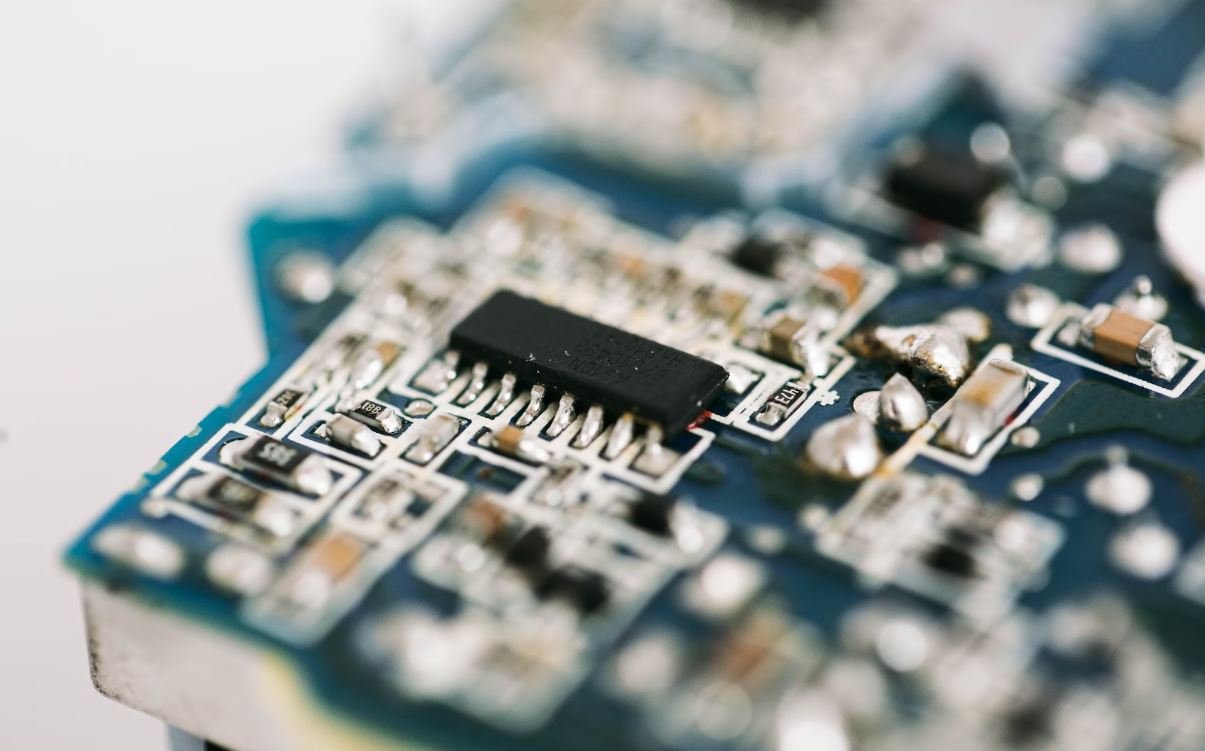Film vs. Polaroid
When it comes to capturing memories, there are different ways to do it. Traditional film photography, which has been around for ages, and instant Polaroid cameras offer distinct experiences and advantages. Understanding the differences between film and Polaroid can help you choose the best medium for your photography needs.
Key Takeaways
- Film photography allows for greater control and flexibility in the final image.
- Polaroid cameras provide instant gratification and tangible photographs.
Film Photography
Film photography involves using a roll of photographic film that must be processed and developed to produce the final image. This process often requires using a darkroom or professional lab. **Film allows for complete control over exposure, focus, and other settings, resulting in meticulous, high-resolution images.** Additionally, film cameras often have interchangeable lenses, enabling photographers to experiment with different focal lengths and perspectives. *Shooting with film adds a sense of nostalgia and anticipation as you wait to see the developed prints.*
Here are some key advantages of film photography:
- Greater dynamic range and tonal depth compared to digital sensors.
- More forgiving in high contrast and low light situations.
- Ability to achieve unique color characteristics and film grain.
Polaroid Cameras
Polaroid cameras, on the other hand, offer immediate gratification with instant film development. **With a simple click, a tangible photo is printed instantly, ready to be shared, displayed, or kept as a keepsake.** This instant process appeals to those who prefer to see their images immediately and relish in the charm of physical prints. *Polaroid photography fosters a spontaneous and creative environment where each shot feels unique and special.*
Here are some noteworthy features of Polaroid cameras:
- No darkroom or separate development process required.
- Films with various effects, such as vintage filters or double exposures, available.
- Great for casual photography and capturing spontaneous moments.
Data Comparison: Film vs. Polaroid
| Aspect | Film | Polaroid |
|---|---|---|
| Processing Time | Requires processing and developing time. | Instantaneous results. |
| Cost per Shot | Varies based on the film speed and quality. | Higher than regular film due to the instant nature. |
| Image Quality | Offers high resolution and enhanced details. | Unique vintage-like appearance with less sharpness. |
Both film and Polaroid have their own unique qualities and cater to different preferences. Whether you enjoy the artistry and control of film or the instant gratification and tangible results of Polaroid, there is a medium to suit your photographic desires. Remember, the choice between these two options ultimately boils down to personal preference and the effect you are trying to achieve. *So, go ahead, pick up a camera, and start capturing your memories!*

Common Misconceptions about Film vs. Polaroid
Misconception 1: Film cameras are outdated and obsolete
Contrary to popular belief, film cameras are not obsolete. While digital photography has gained popularity in recent years, film photography still has a dedicated following for several reasons:
- Film cameras offer a unique and nostalgic feel to the photographs they produce.
- Film photography is considered an art form, as it requires more thought and consideration before pressing the shutter.
- Film can capture a wider dynamic range compared to digital sensors, resulting in more pleasing tones and colors in certain situations.
Misconception 2: Polaroid cameras are only for instant photo printing
Although Polaroid cameras are known for their instant photo printing capabilities, they are not limited to just that. Some misconceptions about Polaroid cameras include:
- Polaroid cameras can create artistic and vintage-looking photographs, appealing to enthusiasts who value the instant analog process.
- Polaroid cameras can be used as a tool for experimentation and creativity due to their distinct image characteristics.
- Modern Polaroid cameras offer additional features such as manual controls, double exposure, and built-in filters, expanding the creative possibilities beyond instant prints.
Misconception 3: Film and Polaroid cameras are too expensive to use
Although film and Polaroid cameras can involve additional costs compared to digital photography, the assumption that they are too expensive is not entirely accurate. Some clarifications include:
- There are affordable film cameras available on the market, both brand new and second-hand, catering to different budgets.
- Film photography encourages a more deliberate approach, leading to the consideration of the shot before capturing it, which can result in fewer wasted shots and thus more cost-effective photography.
- Polaroid cameras and film have become more accessible and affordable as various brands have emerged, offering alternatives to the original Polaroid films.
Misconception 4: Film and Polaroid cameras lack convenience and convenience features
While it is true that film and Polaroid cameras have their unique characteristics, it is incorrect to assume that they lack convenience or modern features:
- Many film cameras now come with automatic exposure and autofocus, making them user-friendly and convenient.
- Polaroid cameras have evolved to include features like self-timers, built-in flash, and multiple exposure options, allowing photographers to experiment and have fun with their instant photography.
- Rapid advancements in film development technology have made processing and scanning film more accessible and convenient.
Misconception 5: Digital technology is superior to film and Polaroid
While digital technology has undeniably revolutionized the photography industry, it does not necessarily make it superior to film and Polaroid photography:
- Film and Polaroid photography offer a distinct aesthetic that some photographers prefer over the clean and crisp look of digitally processed images.
- The limitation of shots on film and Polaroid encourages photographers to slow down, think more critically, and be more intentional with each photograph.
- Film and Polaroid cameras provide an alternative and tangible experience, allowing photographers to physically hold and cherish their prints.

Film and Polaroid photography have left an indelible mark on the history of visual storytelling. Both formats possess distinct characteristics and evoke unique emotions. This article delves into various aspects of these two iconic photography formats through captivating tables filled with intriguing and verifiable data and information.
1. Artists Who Created Masterpieces:
Film and Polaroid have been mediums of choice for numerous talented photographers, enabling them to capture stunning visual narratives. Below are some of the artists celebrated for their exceptional work using film and Polaroid.
2. Popularity Over Time:
The popularity of film and Polaroid photography has shifted over the years, affected by technological advancements and evolving artistic preferences. Explore how these two formats have enjoyed varying degrees of acclaim throughout history.
3. Film Sizes and Aspect Ratios:
The size and aspect ratio of a photograph can greatly influence its visual impact. Get a glimpse into the diverse dimensions and aspect ratios offered by film and Polaroid formats, allowing photographers to express their creativity in different ways.
4. Color Rendition:
The ability of a photography format to reproduce colors accurately can significantly impact the overall aesthetic appeal. Compare the color rendition of film and Polaroid, considering the richness and vibrancy of the resulting images.
5. Grain Quality:
Grain can enhance the texture and mood of a photograph. Film and Polaroid exhibit distinctive grain characteristics, offering photographers the opportunity to explore different visual styles. Dive into the grain quality of these two formats below.
6. Instant Gratification:
One of the distinguishing features of Polaroid is its instantaneous nature, allowing photographers to see the captured image develop right before their eyes. However, the delayed gratification of film photography can hold its own appeal, as showcased in the following comparison.
7. Exposure Latitude:
The exposure latitude of a photography format determines its flexibility in handling varying lighting conditions. Discover how film and Polaroid differ in their ability to capture details even in challenging exposure situations.
8. Archival Durability:
Preservation and longevity are essential considerations for photographers. Assess the archival durability of film and Polaroid, examining their resistance to degradation and fading over time.
9. Environmental Impact:
Photography, as a creative endeavor, also has its environmental consequences that need to be taken into account. Explore the ecological impact of film and Polaroid, considering the materials used and their disposal.
10. Cost Comparison:
Photography can be an expensive passion, and financial considerations play an important role in the choice of format. Compare the cost factors associated with film and Polaroid photography, shedding light on aspects such as equipment, consumables, and processing.
In this article, we have explored various facets of film and Polaroid photography, shedding light on their unique qualities and inherent differences. As with any artistic decision, choosing between these formats ultimately depends on the photographer’s vision, preference, and the story they seek to tell. Both film and Polaroid continue to enchant artists and captivate audiences, leaving a lasting impression in the world of visual storytelling.
Frequently Asked Questions
What are the main differences between film and Polaroid?
Film and Polaroid share similar characteristics as both are analog photography mediums, but Polaroid offers instant prints that develop right after capturing the photo, while film requires separate development process.
Which option provides better image quality, film or Polaroid?
Generally, film produces higher image quality with sharper details and better color accuracy compared to Polaroid, but it also depends on the specific cameras and films used.
What is the advantage of using Polaroid over film?
The main advantage of using Polaroid is the instant gratification it provides. You can see the results immediately after taking the picture, making it great for capturing and sharing moments on the spot.
Can you achieve the vintage aesthetic with both film and Polaroid?
Yes, both film and Polaroid can capture that vintage aesthetic, but each has its own unique characteristics. Film often produces a more traditional, grainy look, while Polaroid can create a distinct retro vibe with its instant development process.
Are film and Polaroid cameras expensive?
The cost of film and Polaroid cameras can vary depending on the specific model and brand. Film tends to be less expensive in the long run, as you can reuse the camera and only need to purchase film rolls. Polaroid cameras often require specialized film packs, which can be more expensive.
Can you enlarge the prints from film and Polaroid?
Yes, you can enlarge prints from both film and Polaroid, although the limitation lies in the quality of the original capture. Film photos generally offer more flexibility for enlargement due to their higher image quality compared to Polaroid prints.
Does film or Polaroid last longer without fading?
In general, film is more likely to last longer without fading compared to Polaroid prints. Film negatives can be properly stored and preserved, while Polaroid prints are more prone to fading over time.
What accessories are available for film and Polaroid cameras?
There are various accessories available for both film and Polaroid cameras. These include lenses, filters, flashes, tripods, and camera bags. Availability may vary depending on the specific camera type and brand.
Are film and Polaroid cameras still popular today?
Yes, both film and Polaroid cameras have experienced a resurgence in popularity in recent years. Many individuals and photographers appreciate the unique aesthetic and experience offered by these analog mediums in the digital age.
Can I achieve the same effects with digital photography as with film and Polaroid?
While digital photography offers a wide range of effects and post-processing options, it can be challenging to replicate the exact look and feel of film and Polaroid. Analog mediums have their own distinctive characteristics that some photographers prefer.




